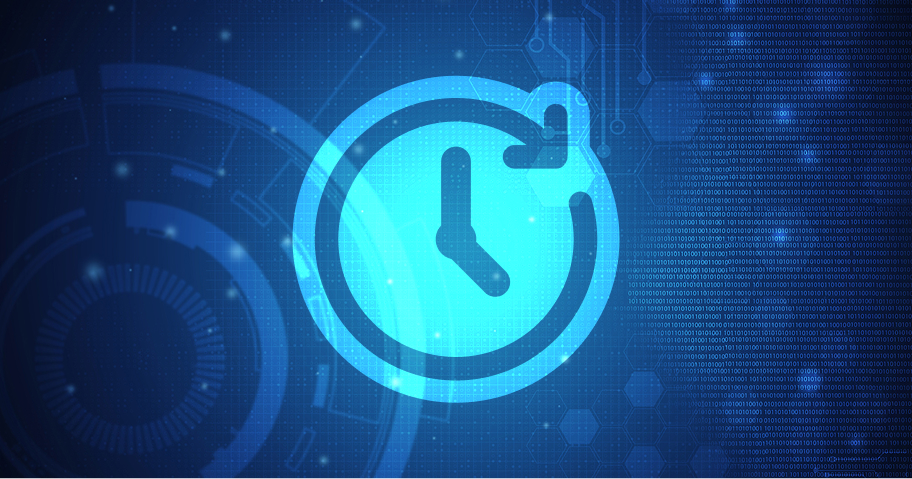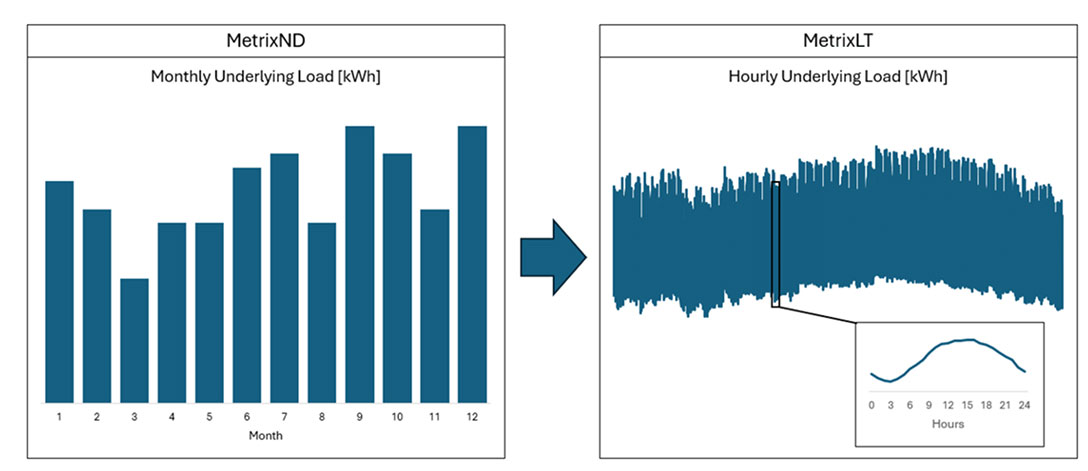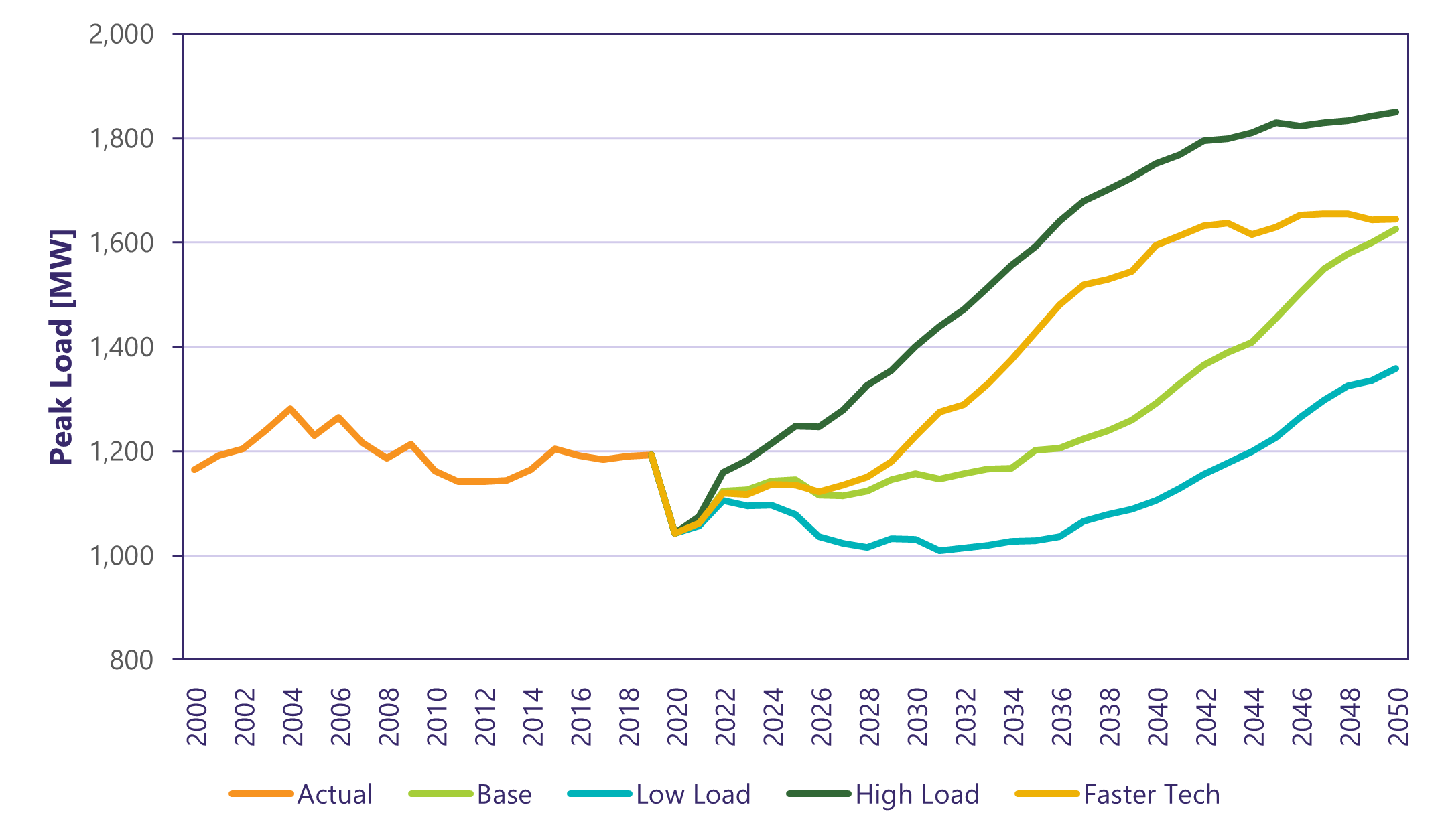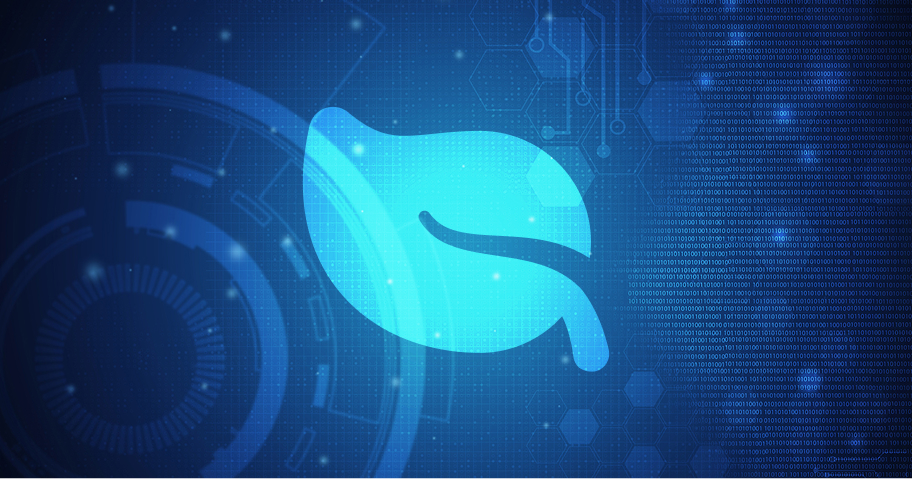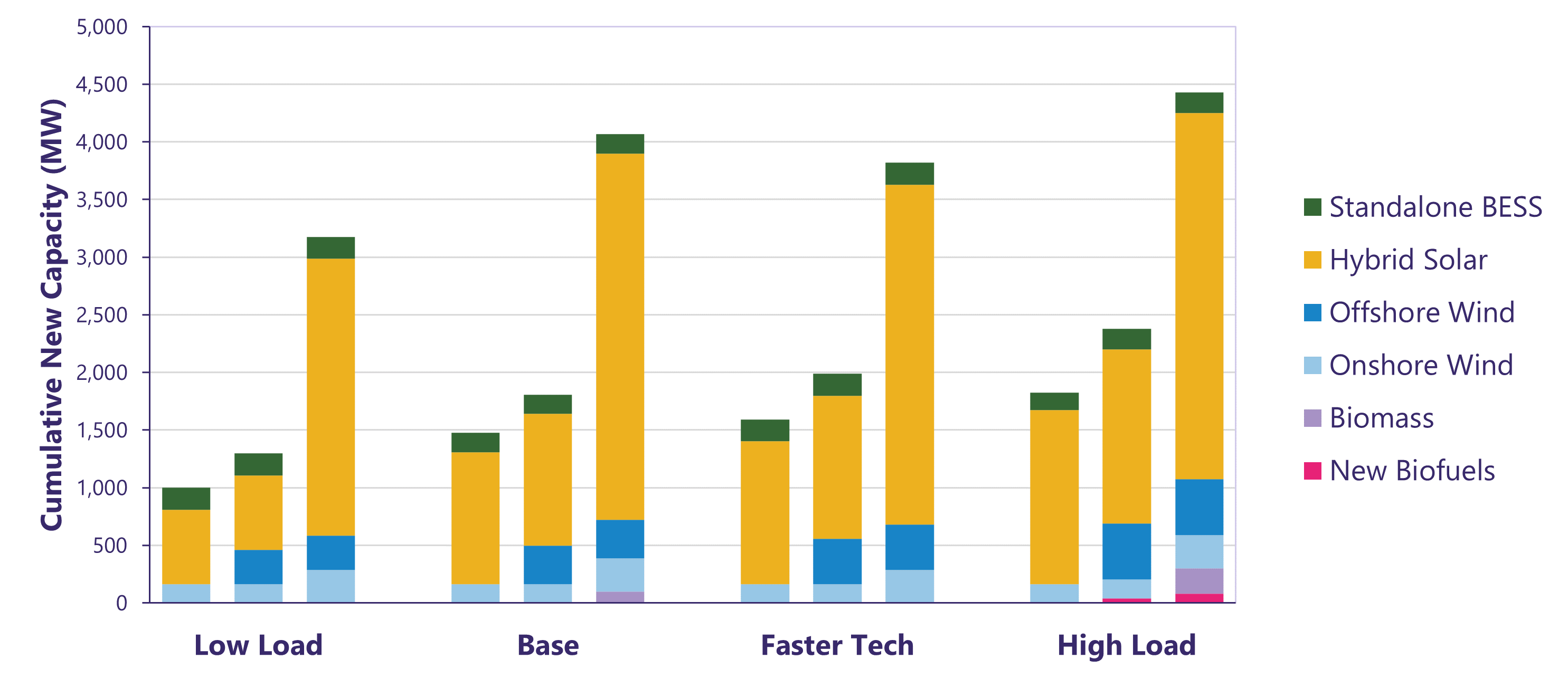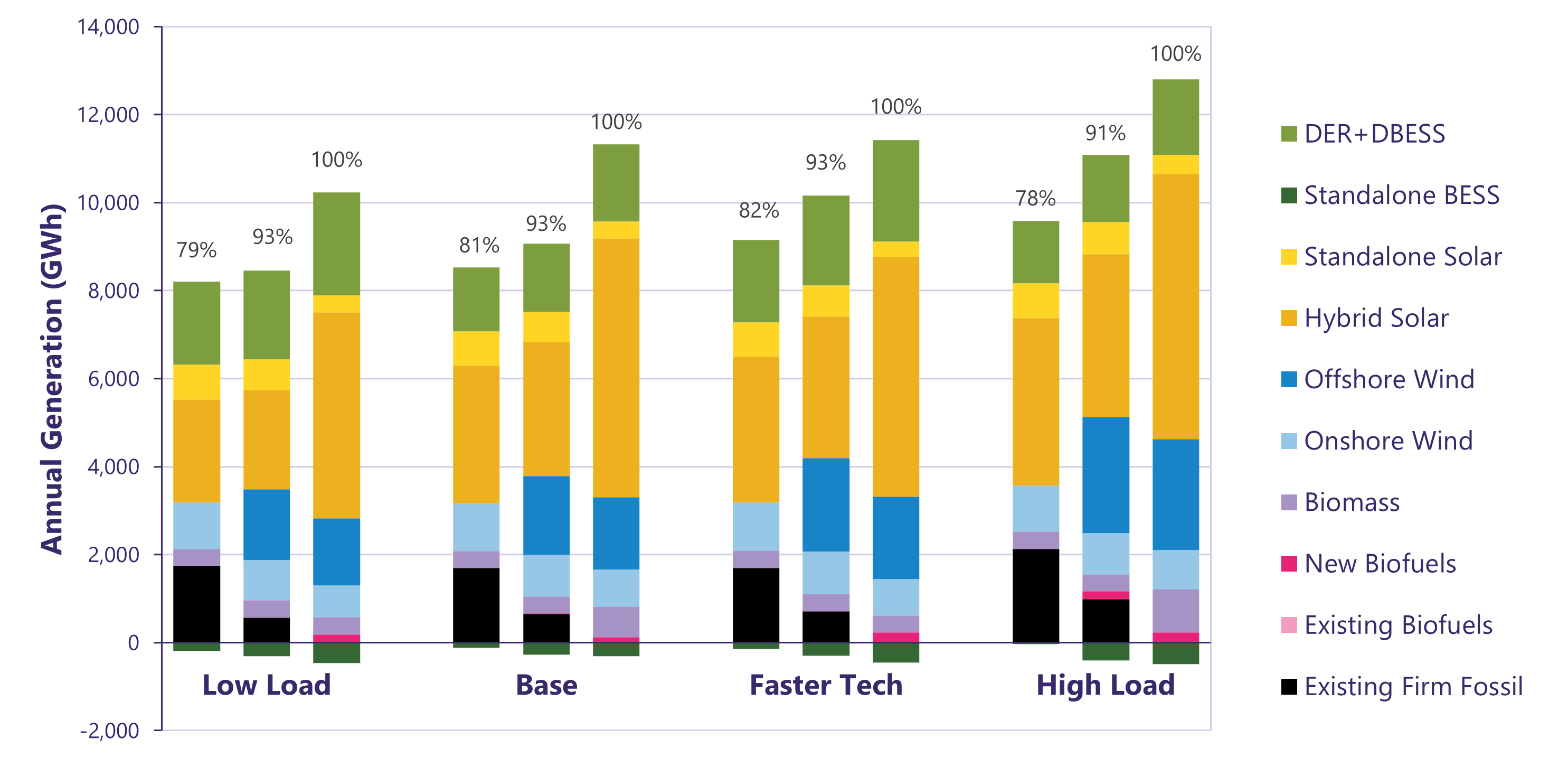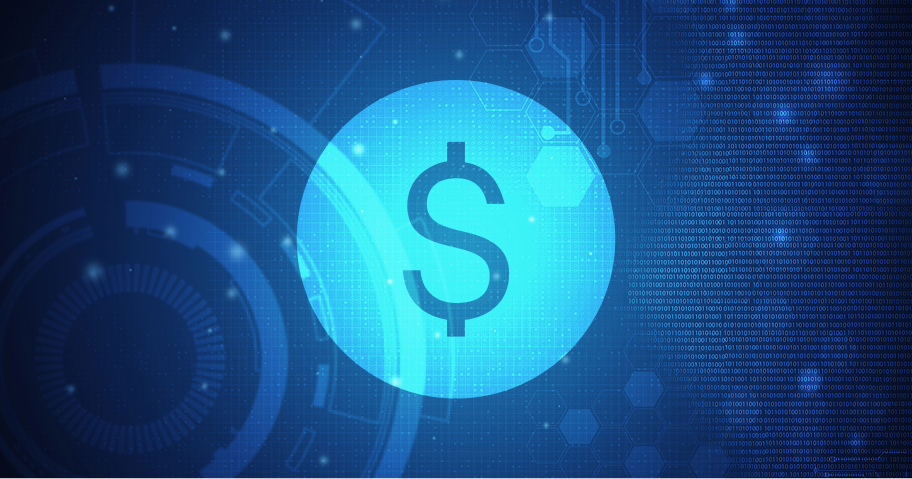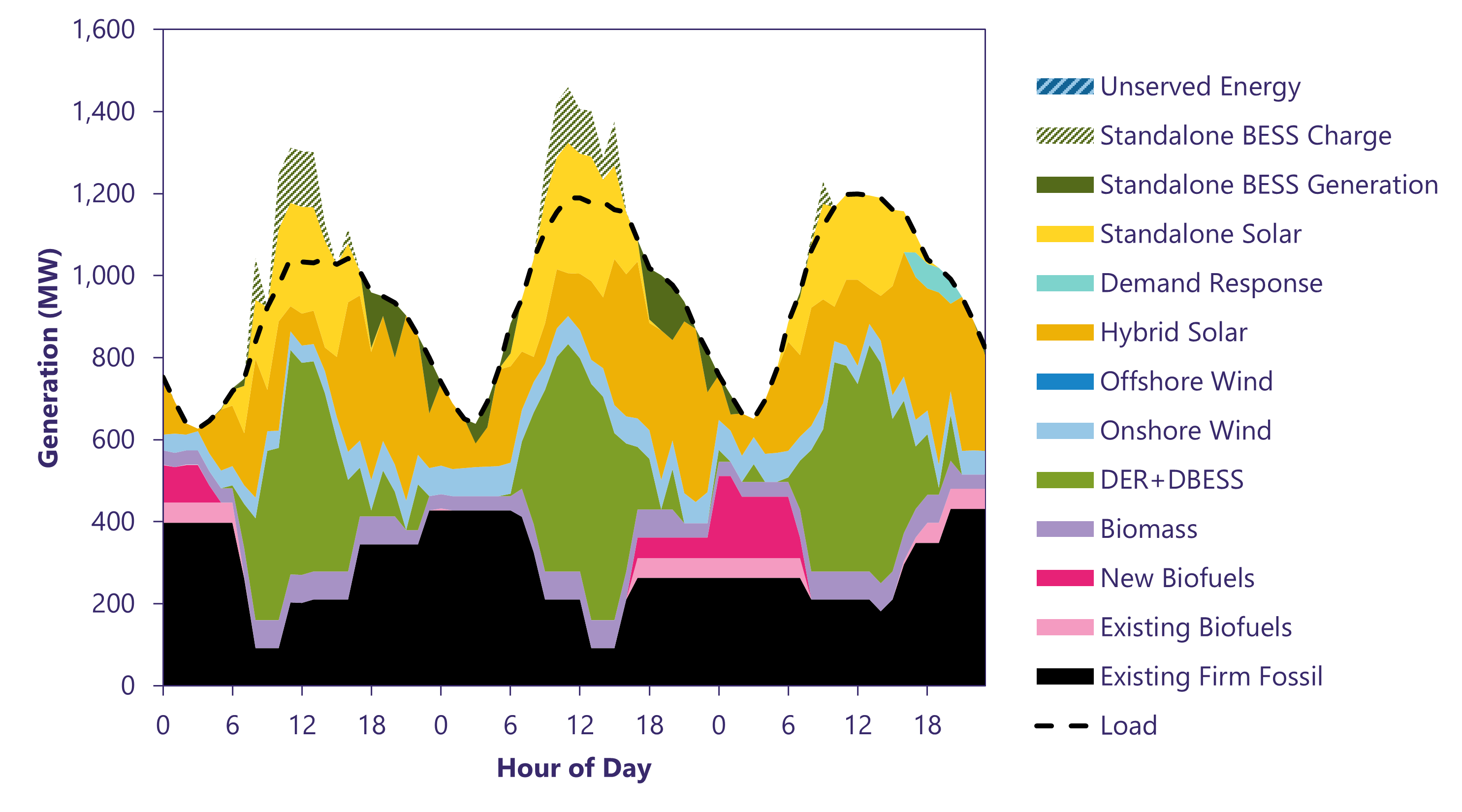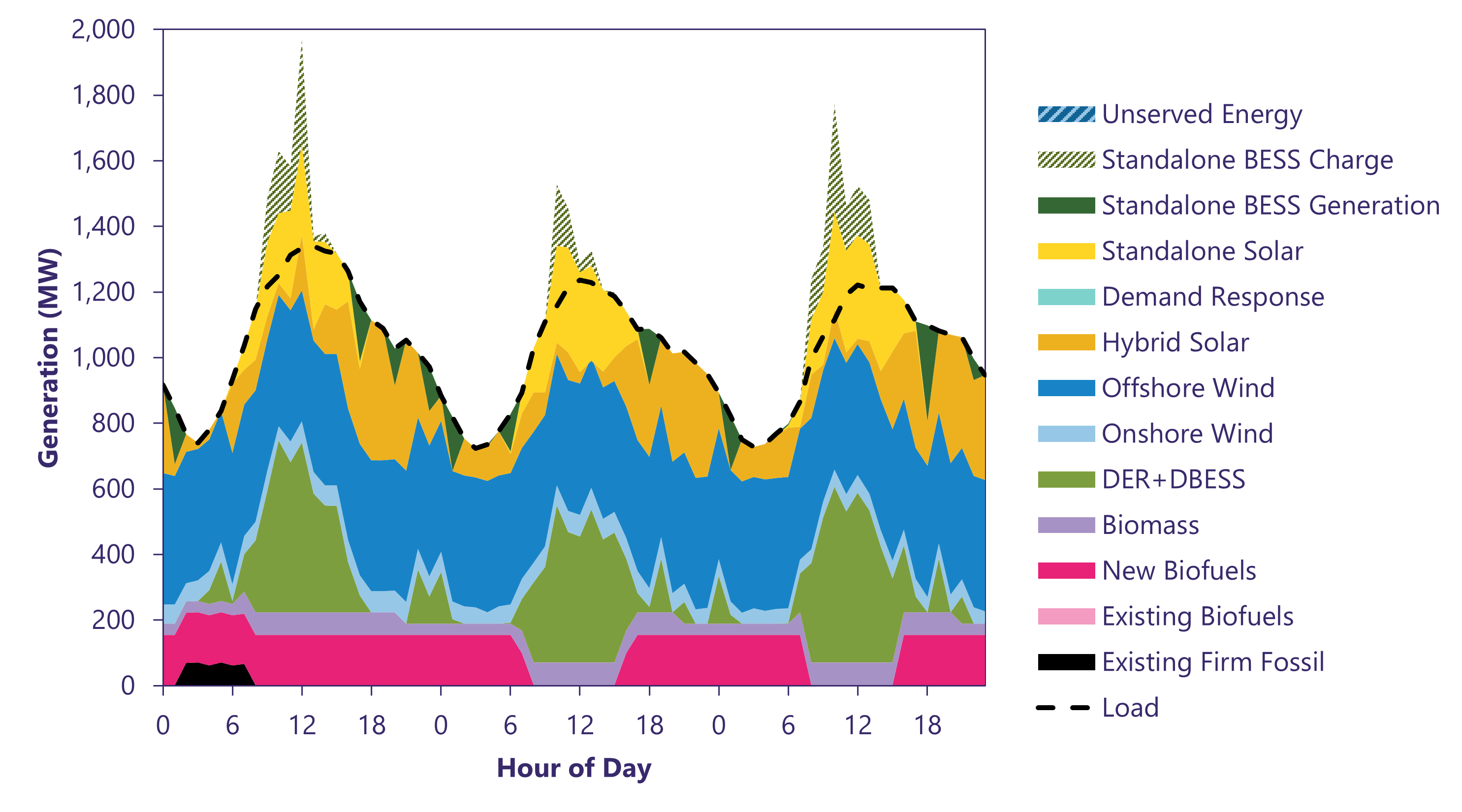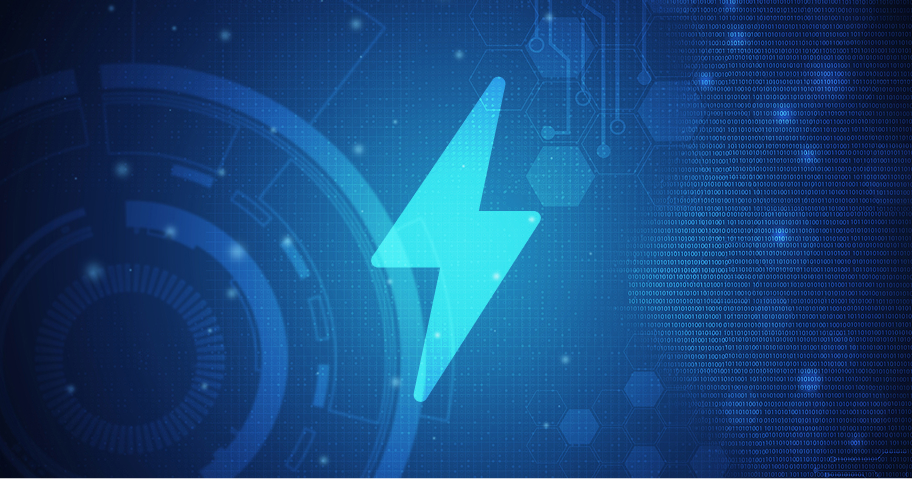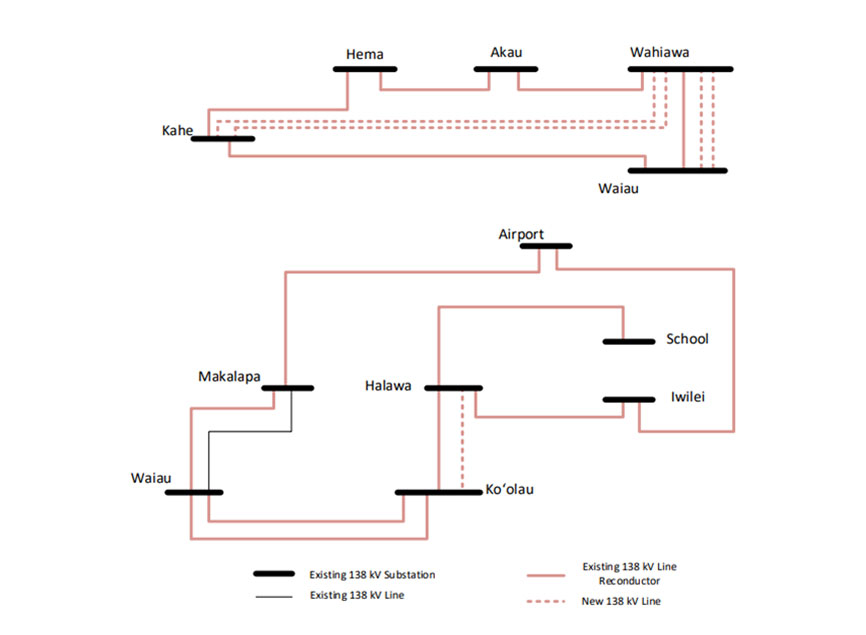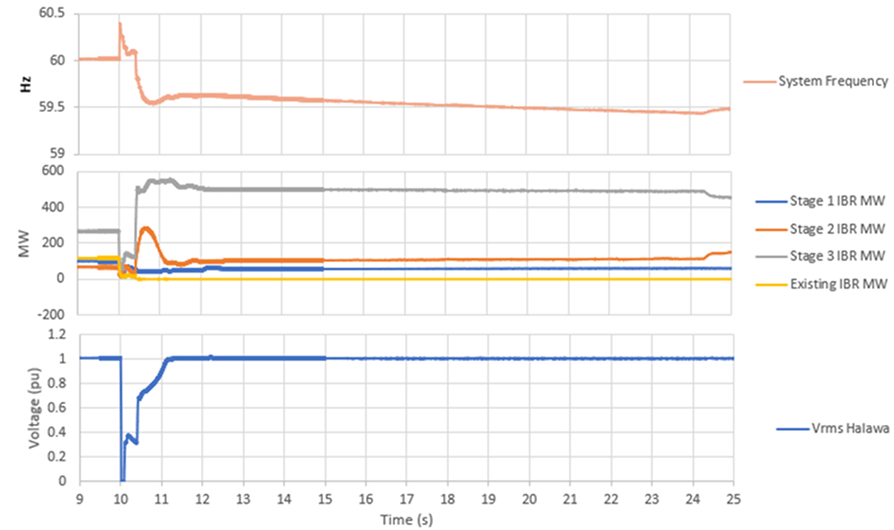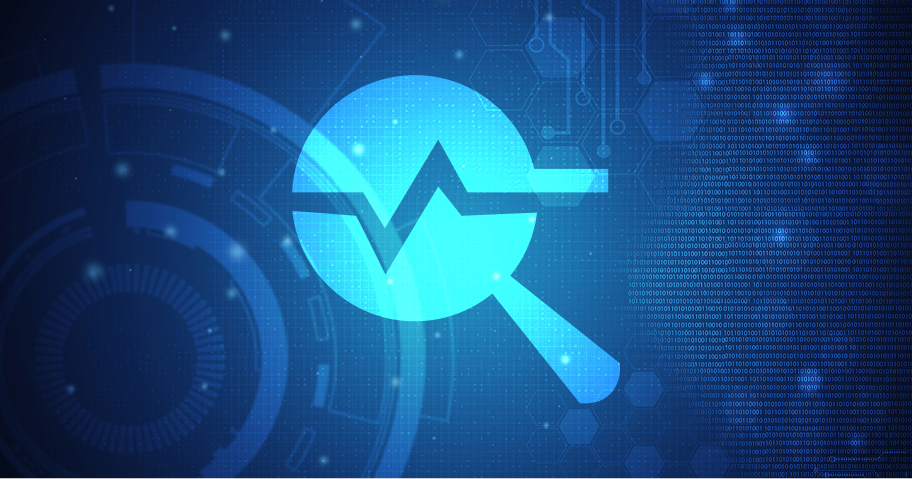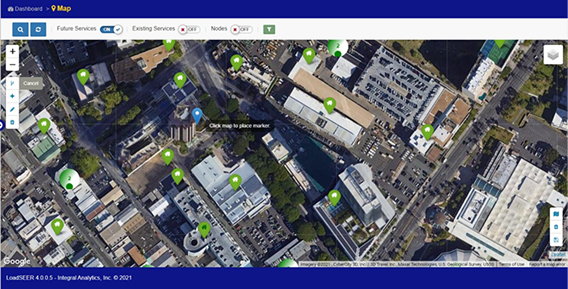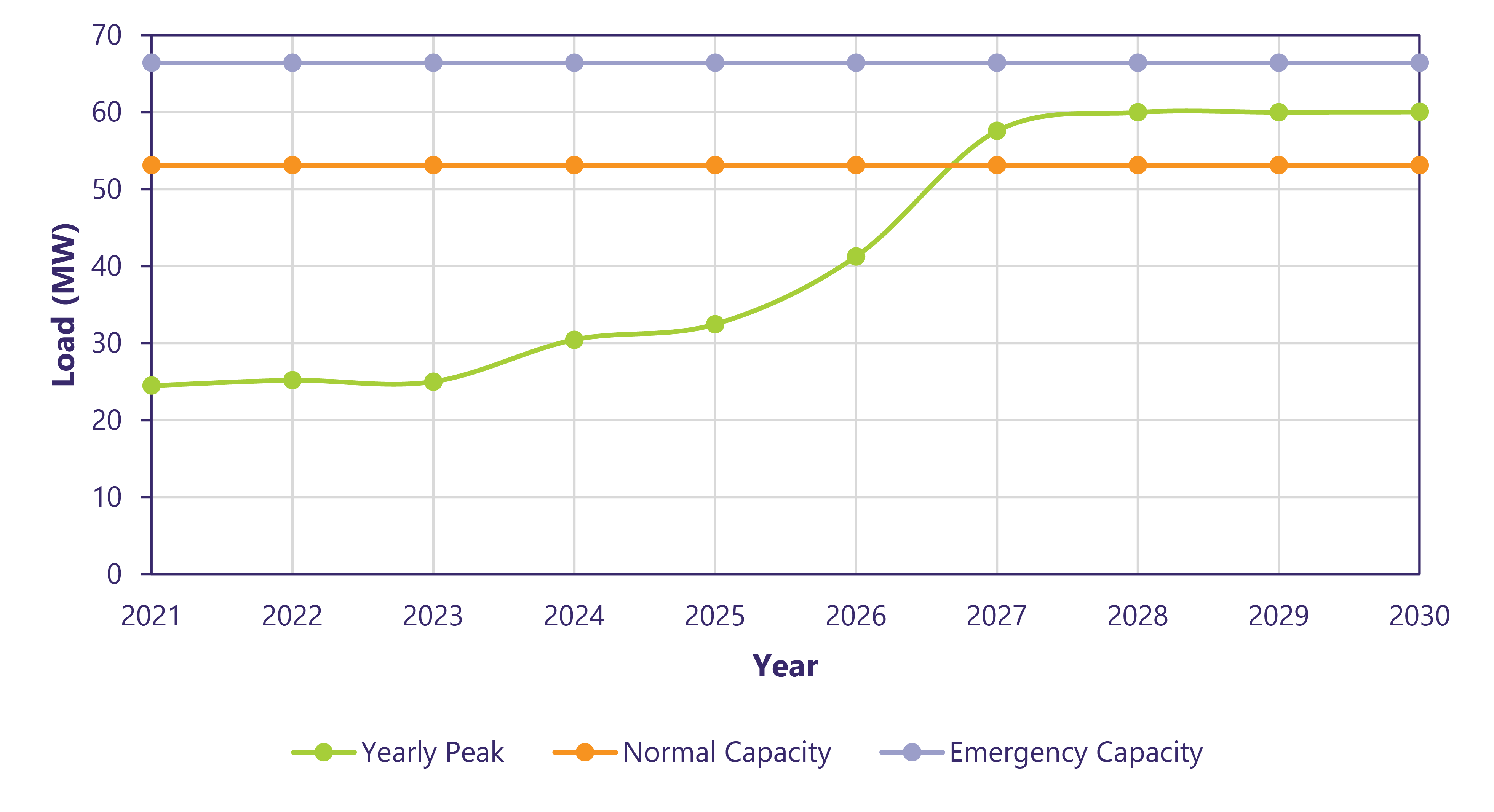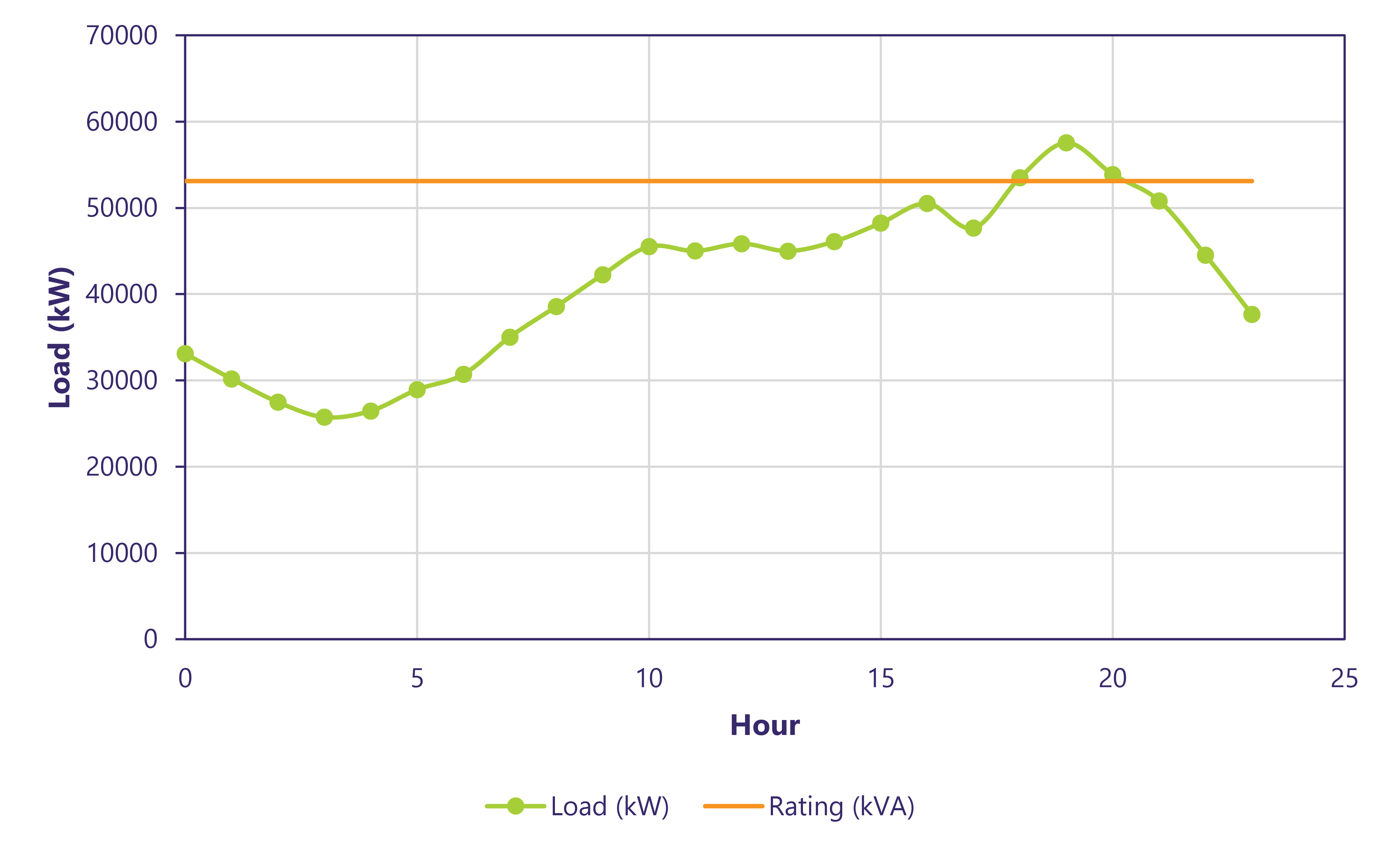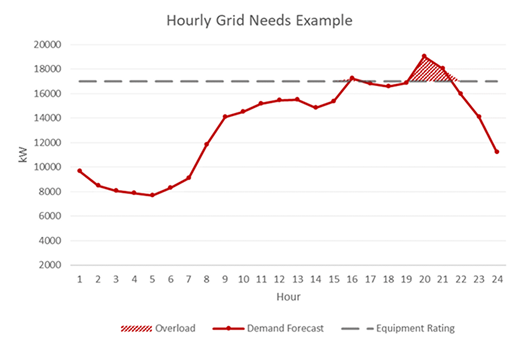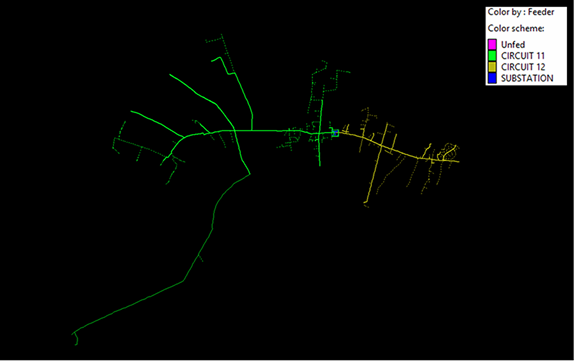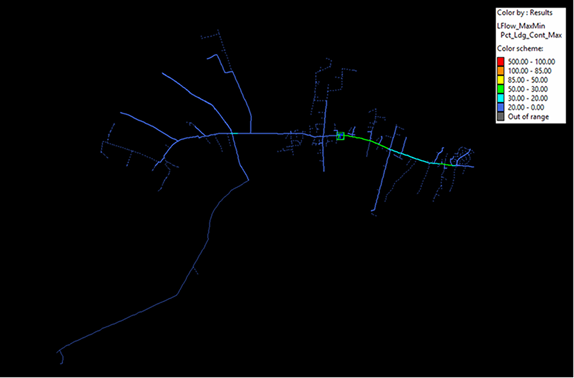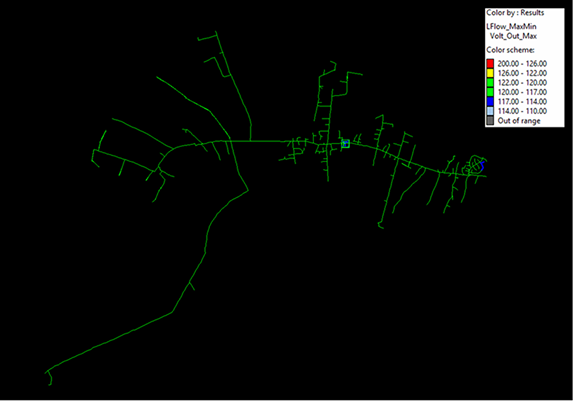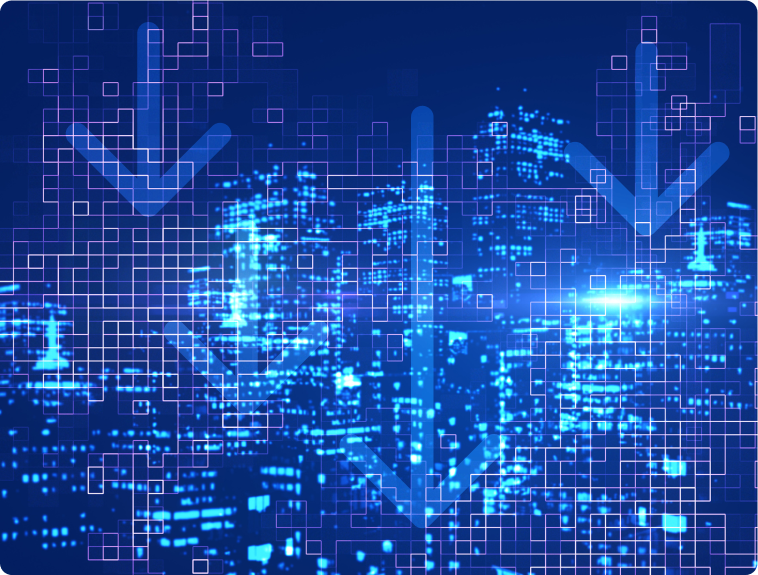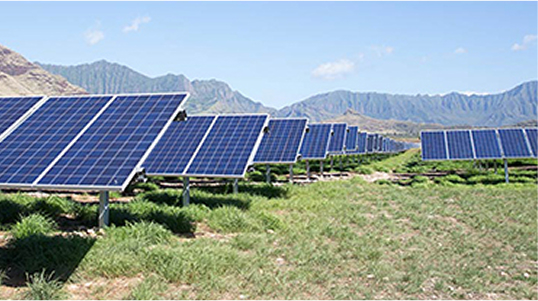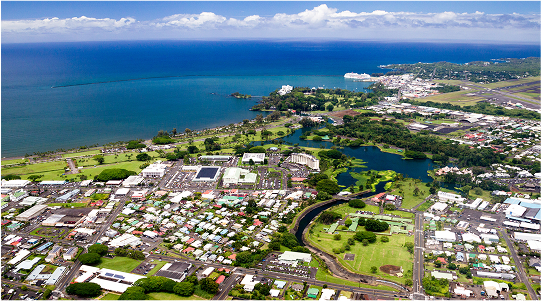Planning for a Hawai'i Powered future
Explore the energy models that are part of our Integrated Grid Planning process.
Hawaii's energy future
Hawaii Powered is our vision for powering the grid with 100% local, renewable energy. It celebrates finding solutions for a clean energy future right here in Hawaii.
As we plan for a Hawaii Powered future, we're focused on:
- Affordability: Stabilizing electricity bills by using more local, renewable energy sources, which will allow us to rely less on imported oil.
- Reliability: Planning ensures we have enough power to keep the lights on, especially as demand for electricity continues to grow.
- Resilience and sustainability: By using local, renewable resources, we support the state's goals for decarbonizing the economy, while also building a stronger, more resilient energy system that can better withstand storms and emergencies.
Hawaii's unique energy challenges and opportunities
Energy planning is critical everywhere, but planning in Hawaii comes with unique challenges and opportunities for our island way of life:
- Island isolation: Because of our geographic isolation, we can't rely on neighboring states for backup power. That's why it's critical we plan carefully to ensure we have enough energy all year round.
- Volatile import costs: Hawaiian Electric currently imports about 60% of our fuel for generators, making us vulnerable to fluctuating global fuel costs. Energy planning for more local, renewable resources helps reduce our reliance on imported fuels and stabilizes customer bills over time.
- Achieving 100% clean energy goals by 2045: The world is watching as we innovate to scale up clean energy on our islands and do our part to address the changing climate.
Our data-driven approach
Hawaiian Electric applies a data-driven approach using analytical planning models to define and evaluate resource plans for the future electric grid that are affordable, reliable and resilient and can adapt to meet Hawaii's energy challenges and goals.
Presented below are the key planning models and concepts of the Hawaiian Electric Integrated Grid Planning (IGP) process.
Inside the planning process
Integrated Grid Planning
We approach energy planning through a process called Integrated Grid Planning, or “IGP.” This process brings many people together to build a resilient and reliable grid from diverse renewable resources.
In 2023, we filed the Integrated Grid Plan, which proposes actionable steps to decarbonize the electric grid on the state's timeline, with a flexible framework that can adapt to future technologies. The Integrated Grid Plan is the culmination of more than 5 years of technical analyses and partnership with stakeholders and community members across the islands.
The Integrated Grid Plan underscores the urgency of action needed to achieve a decarbonized future and shows that every industry and individual will need to play a role. It's everyone's kuleana to create a sustainable future for Hawaii.
Read the Integrated Grid Plan and the latest annual update.
What do you want to know?
Just the highlightsIntro to energy modeling
Hawaiian Electric uses specialized models to guide energy planning decisions related to resources, reliability, affordability and grid interconnection.
These models help forecast demand, identify needed investments and ensure grid stability as conditions change.
Each model analyzes key inputs—like weather, economic trends and energy demand—to simulate grid operations and support informed, forward-looking decisions for serving communities across Hawaii.
Our approach to modeling
Throughout our Integrated Grid Planning process, we use advanced modeling tools to consider a lot of data, evaluate complex trade-offs and analyze different possibilities.
Modeling helps us make informed decisions to meet our long-term goals, such as reaching the state's objective to use 100% renewable resources to power the electric grid by 2045 and achieve a net zero emissions clean economy by 2045.
Whenever we use a model, we take steps before and after modeling.
- We ask key questions about resources, reliability, affordability and interconnection.
- We gather data that serves as our inputs. This data includes estimates for resource costs, load forecasts and policy impacts.
- We use modeling tools to provide different types of outputs and compare scenarios (for example, base, low and high bookends for energy demand).
- We interpret and evaluate results to answer questions and create action plans for next steps.
What is a modeling tool?
A modeling tool is a software program that processes large amounts of energy data to create forecasts, simulate electric grid operation under various scenarios and provide insights for informed decision-making.
It's important to understand what questions each model helps solve, what each model does, and what each model does not do.
Keep exploring for information about each individual model.
What can modeling do (and not do)?
Modeling can:
- Forecast future energy demands – Models help forecast how much energy people will use, and when, as more facets of daily life run on electricity. They also factor in renewable and emerging technologies like rooftop solar and electric vehicles.
- Identify future transmission and distribution grid needs to host future demand and generation – Models help determine transmission and distribution grid infrastructure upgrades to host future demand and generation, such as increasing the size of circuits, adding more resources to maintain system stability and system upgrades to maintain effectiveness of protection systems. These upgrades enable customers to choose when and how they use electricity—for example, charging their electric vehicle or supplying electricity from their rooftop solar system. It also enables all customers access to low-cost renewable energy by interconnecting new renewable projects to the grid.
- Find low-cost energy solutions and guide investments – Models help identify the lowest-cost mix of energy resources while meeting reliability and policy goals. This guides investment decisions about building new energy sources—like solar, wind, battery storage or firm generation—to meet future needs.
- Evaluate different energy scenarios – Modeling tests how the grid would perform under various conditions, such as policy changes on renewable standards or emissions targets, shifts in demand due to changes in customer behavior and availability of new technologies.
Modeling cannot:
- Predict the future with 100% certainty or guarantee specific outcomes – Models and simulations provide best estimates of how equipment will operate, but actual costs, policies and technologies can change. Results also depend on the data and assumptions used, which can evolve over time.
- Account for every real-world factor – Models consider a lot of data and complex factors, but they cannot capture absolutely everything, such as all possible market shifts, daily use patterns, weather events or technological breakthroughs.
- Make decisions on their own or replace the need for human judgment – Models don't make decisions—people do. Our staff, policymakers, partners and community input are essential in shaping final energy plans.
- Solve every energy challenge instantly – Models are one tool in a continuous planning process that requires ongoing updates and adjustments.
Keep exploring for information about each individual model.
What's a scenario?
A scenario is a possible future based on different assumptions about energy use, technology and policies. Comparing scenarios helps us prepare for a range of possible energy needs.
For example:
- One scenario might assume Hawaii's energy use stays the same.
- Another might account for increased demand due to greater electrification of daily life.
- A third might show reduced usage due to greater adoption of energy efficiency.
Keep exploring for information about each individual model.
The planning process: many models working together
In energy planning, no single model tells the whole story. We use a series of models, each with a specific role, to help us understand what the future may hold and guide our decisions. The models work together, step by step.
Models: MetrixND and MetrixLT
We start by estimating how much energy customers will need in the future as we all increasingly rely on electricity to power our lives. The MetrixND and MetrixLT models help us forecast future demand on the grid.
Models: RESOLVE and PLEXOS
Next, we identify the energy resources needed to meet that future demand. We use RESOLVE to create a resource portfolio and then test its reliability using PLEXOS. If that portfolio doesn't meet reliability standards, we refine it—either manually or by re-running RESOLVE with more stringent reliability requirements —before testing again.
Transmission needs Models: PSSE/PSCAD
Large-scale resources must be connected to the grid. PSSE and PSCAD help us determine what upgrades are needed to interconnect new large-scale resources, carry larger loads and expand the transmission system.
Distribution needs Models: LoadSeer and Synergi
At the local level, we also assess how to connect customer-sited resources like rooftop solar. LoadSeer and Synergi help us identify where upgrades are needed to support growth on the distribution network.
Once we've used these models to identify future energy needs—from demand to generation to transmission and distribution—we combine the results into a unified, actionable plan. That's the Integrated Grid Plan: a roadmap outlining the steps we'll take to reach 100% renewable energy while continuing to deliver reliable power.
Meet the models
We start by asking questions—then use the right model to help find answers.
Get Started
Click a key question to learn more about each model
Key question:
How does Hawaiian Electric plan for increasing loads due to evolving customer choices and increasing electrification of daily life?
Key question:
What energy resources should Hawaiian Electric invest in, when should they be added and in what amounts?
Key question:
How does Hawaiian Electric ensure that the electric grid remains reliable given future expected changes in demand for electricity and resource mix?
Key question:
How does Hawaiian Electric plan for new transmission investments to interconnect new large-scale resources while ensuring the grid is stable during disturbances and equipment failure?
Key question:
How does Hawaiian Electric plan upgrades to the distribution system to connect new customer solar and batteries, and to meet growing electricity demand?
Key Questions
Future demand
Load forecast is an estimate of how much electricity our customers will use. It helps us understand and plan for how much power we'll need to deliver, especially during times of high demand.
The forecast takes into account things like weather, the economy and how quickly customers might adopt technologies like rooftop solar, batteries, electric vehicles and energy efficiency programs.
Tools like MetrixND and MetrixLT help model and combine all these factors into monthly and hourly load forecasts.
What do MetrixND and MetrixLT do?
MetrixND and MetrixLT are software tools that help predict how much electricity our customers will use in the future. These tools help us forecast the underlying load (amount of electricity customers use) before accounting for factors like rooftop solar, electric vehicles and energy efficiency.
The underlying load forecast is driven primarily by the economy, weather, electricity price and known changes to large customer loads. The forecast is informed by historical data, structural changes (like shifts in new technology, appliance adoption or major changes in customer behavior) and disruptions like COVID-19, volcanic eruptions and other natural disasters. MetrixND is primarily responsible for developing the underlying load forecast at the monthly level, then MetrixLT transforms monthly-level forecasts to hourly forecasts.
Additionally, these tools:
- Offer a variety of statistical methods and models
- Enable forecasters to quickly evaluate and select different models that can cater to each island's specific characteristics
- Can generate forecasts at the monthly and hourly level
- Are subject to garbage-in-garbage-out like any other software tool; input data quality plays an important role in developing reliable forecasts
What inputs does MetrixND consider?
Core inputs:
Weather
Electricity use can be heavily dependent on the weather. Depending on variables like how hot and humid the weather is, electricity consumption can vary widely.
- NOAA: Weather data primarily comes from the National Oceanic and Atmospheric Administration's (NOAA) National Center for Environmental Information (NCEI) office.
Economic indicators
Economic trends play an important role in forecasting future energy use. As these economic factors change over time, so does the demand for electricity. New construction and development, tourism fluctuations, the cost of imported fuels and the job market all shape how households and businesses use electricity.
- UHERO: The Company partners with the University of Hawaii Economic Research Organization (UHERO) for historical and forecasted economic indicators such as personal income, population, jobs, etc.
Other indicators and flags
The models can benefit from additional data that identifies certain events and conditions by using dummy variables or scaling factors. These help the model consider how different conditions (such as day-of-the-week or major events, like the COVID-19 pandemic) may impact electricity usage.
What inputs does MetrixLT consider?
Core inputs:
Monthly energy
We generate forecasts for every type of energy usage, like efficiency measures, rooftop solar usage and EV charging patterns. MetrixLT will use these monthly forecasts combined with energy patterns to generate hourly forecasts.
Energy patterns
Customer electricity use varies from month to month, day to day, and even hour to hour. Using historical data, study results and insights from industry partnerships, we develop hourly usage patterns (load shapes) of how customers and technologies use or generate electricity throughout a year.
What outputs do MetrixND and MetrixLT provide?
Core outputs:
Underlying load forecast
The underlying load forecast is the estimated electricity use by customers before considering the impacts of rooftop solar, electric vehicles and energy efficiency. MetrixND derives the underlying load forecast at the monthly level which is then transformed into hourly forecasts using MetrixLT.
Hourly forecasts
The final result from MetrixLT is an hourly forecast that originally started at the monthly level. MetrixLT is agnostic to the type of monthly forecast it starts with.
The following images depict outputs from MetrixND and MetrixLT.
Informing action
This forecast is the starting point for other modeling work, including PLEXOS and RESOLVE. We used MetrixND and MetrixLT outputs to inform our IGP action plan and preferred plans for each island we serve, including Oahu, Hawaii and Maui County.
Diving Deeper into Data
Frequently asked questions
Yes, we use separate models for each island—for example, we run five separate RESOLVE models in total (Oahu, Moloka'i, Maui, Lana'i and Hawaii).
RESOLVE and other models consider a wide range of resources, which generally fall into these four categories:
- Variable: Variable resources, such as wind and solar, have intermittent energy production, driven by weather patterns. They can often be curtailed if supply exceeds demand.
- Firm: Firm resources typically combust a fuel to spin a turbine and then convert that mechanical energy into electricity. These resources are dispatchable and have output driven by fuel use and heat rate.
- Energy-limited: Resources such as battery energy storage or pumped storage hydro typically charge from the grid at times of oversupply or low energy prices and discharge when demand is high.
- Other: The model also considers energy efficiency and distributed energy resources (DER). Their adoption levels are driven by the energy demand forecast.
There are many factors that can change the cost of renewable resources over time. Technological improvement and innovations can drive down costs of resources like wind and solar. Resource costs can also change based on changes in state and federal tax credits and the expected cost of project financing.
We generally consider near-term as the next 1-5 years from now, mid-term as 5-10 years from now and long-term as 10-30 years from now. Modeling helps us look at each of these different timescales. We use these different timescales to help focus our planning and actions, understanding that we need to take immediate steps while ensuring we can invest in long-term upgrades and adapt to unforeseen changes.
A reliable and resilient grid takes a diverse portfolio of renewables that includes large and small-scale generation and firm generation. Firm generation fills the gaps from weather-dependent resources like solar and wind, as it is available any time for as long as needed. Examples include geothermal or conventional generators that use zero-carbon fuels.
Modeling for the Integrated Grid Plan helped us understand how much firm generation we would need by analyzing different portfolios of firm and variable generation to see how much of each resource type could meet reliability goals. While large amounts of low-cost variable renewables and storage helped to reduce the total cost of Hawaiian Electric's resource portfolio, a small amount of firm generation was still needed as a back stop to ensure the reliability of the system, particularly under adverse conditions where the weather was poor and existing generators were on outage.
We're often asked, “Can we reach a 100% clean energy future if everyone installs solar panels on their rooftops?” As much as we love rooftop solar, the short answer is no. We'll need a mix of small-scale and grid-scale (large generation facilities and transmission infrastructure) for a reliable, resilient, renewable-powered grid. There are few reasons why:
- Solar isn't right for every rooftop. It's unlikely that we could install solar on every roof in Hawaii—not all roofs have the right conditions to generate solar energy, and some customers will be unable or unwilling to install panels.
- A diverse grid is resilient. Generating electricity from a mix of resources and scales benefits our overall energy resilience and customer bills. Diversifying our energy generation to include small- and grid-scale projects keeps us from depending on any one source for all our electricity. This helps us bounce back faster from disasters and shields us from fluctuating costs of resources. For customers, this means a lower risk of outages and more stable bills.
- Even if it could work, it wouldn't power the whole grid. Forecasts show that private generation alone would not supply enough electricity to meet future energy needs. To replace just one fossil fuel generator, we expect the islands will need new wind and solar projects with a collective footprint 29 times the size of Aloha Stadium. Grid-scale renewables are essential to supply this much energy.
- Rooftop solar is more costly than large-scale renewable projects that can realize economies of scale. The IGP modeling showed a preference for maximizing large-scale resources to achieve lower overall costs of the plan. Only in the land-constrained case on Oahu where the development of new large-scale resources was limited did the models seek to expand rooftop solar.
Stay involved
Sign up for updates, share your thoughts and stay informed as we plan for a more resilient, affordable and sustainable energy system for our islands.
Email us at igp@hawaiianelectric.com or use our online form.
Sign up for email updates Request a presentation


 Presented below are the key planning models and concepts of the Hawaiian Electric Integrated Grid Planning (IGP) process.
Presented below are the key planning models and concepts of the Hawaiian Electric Integrated Grid Planning (IGP) process.

